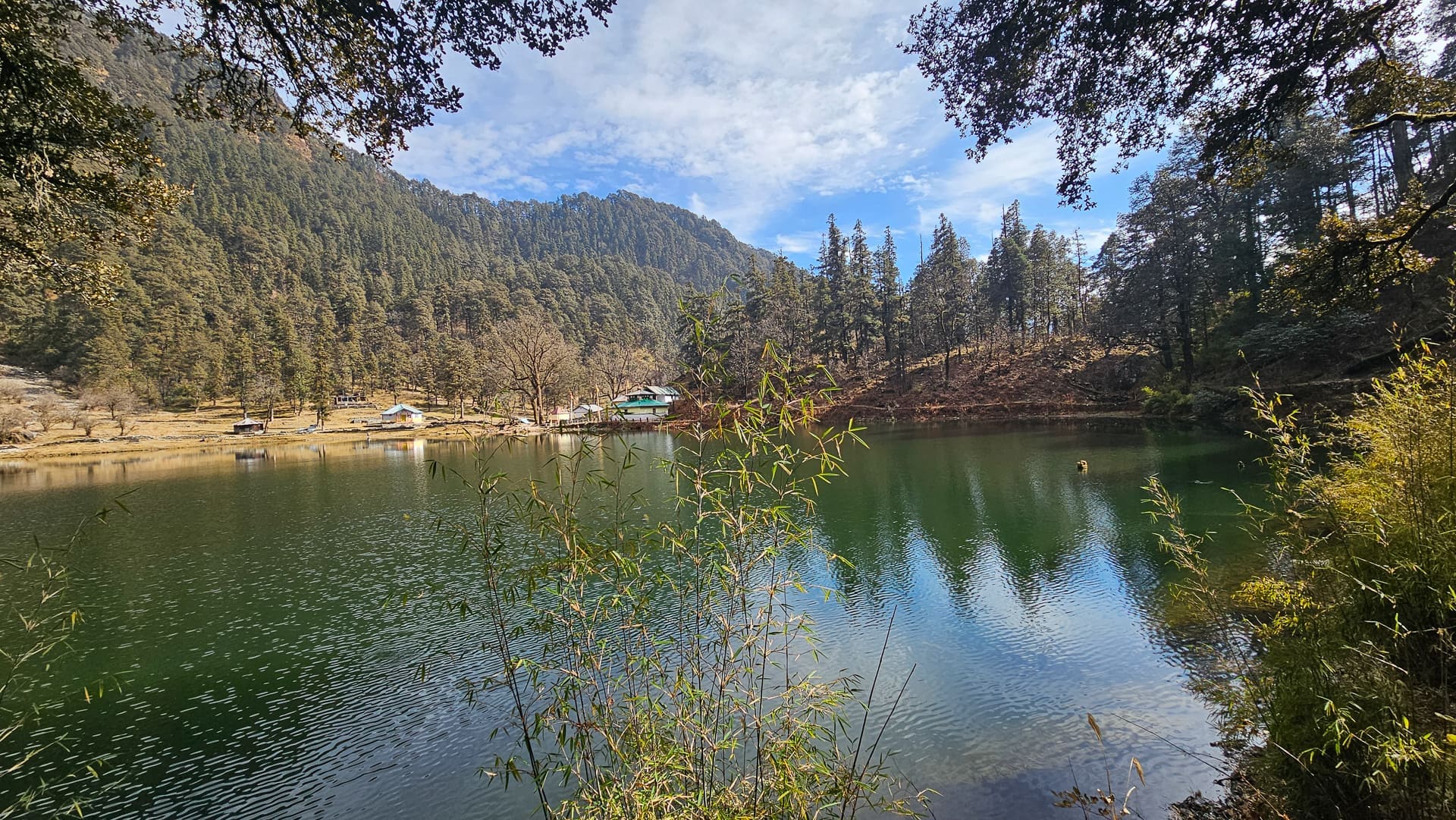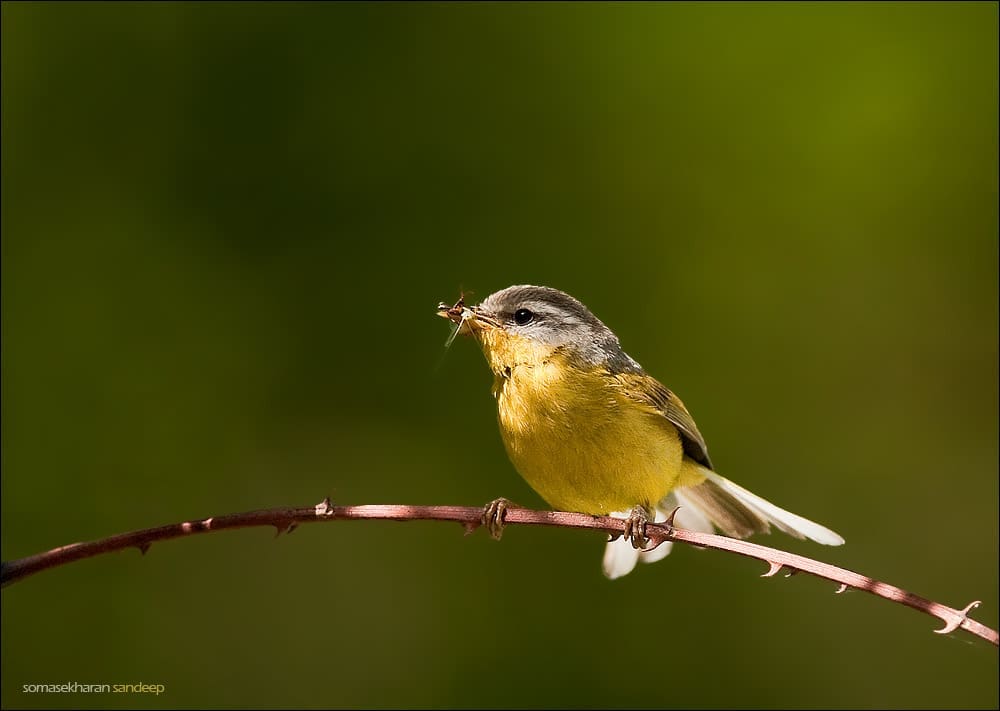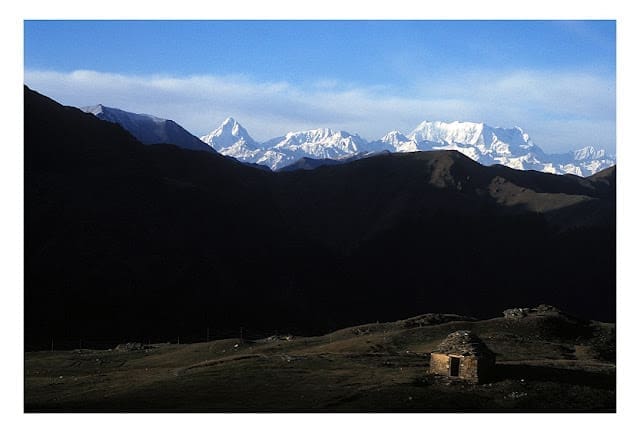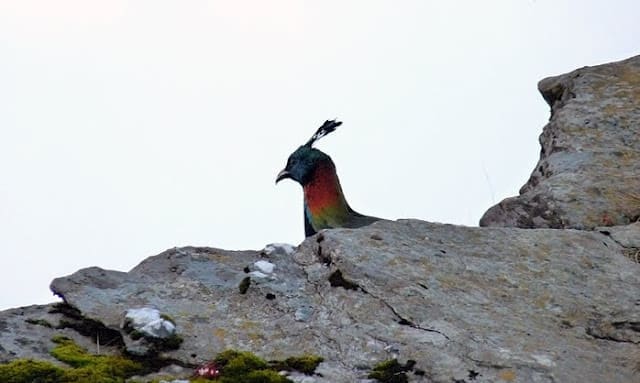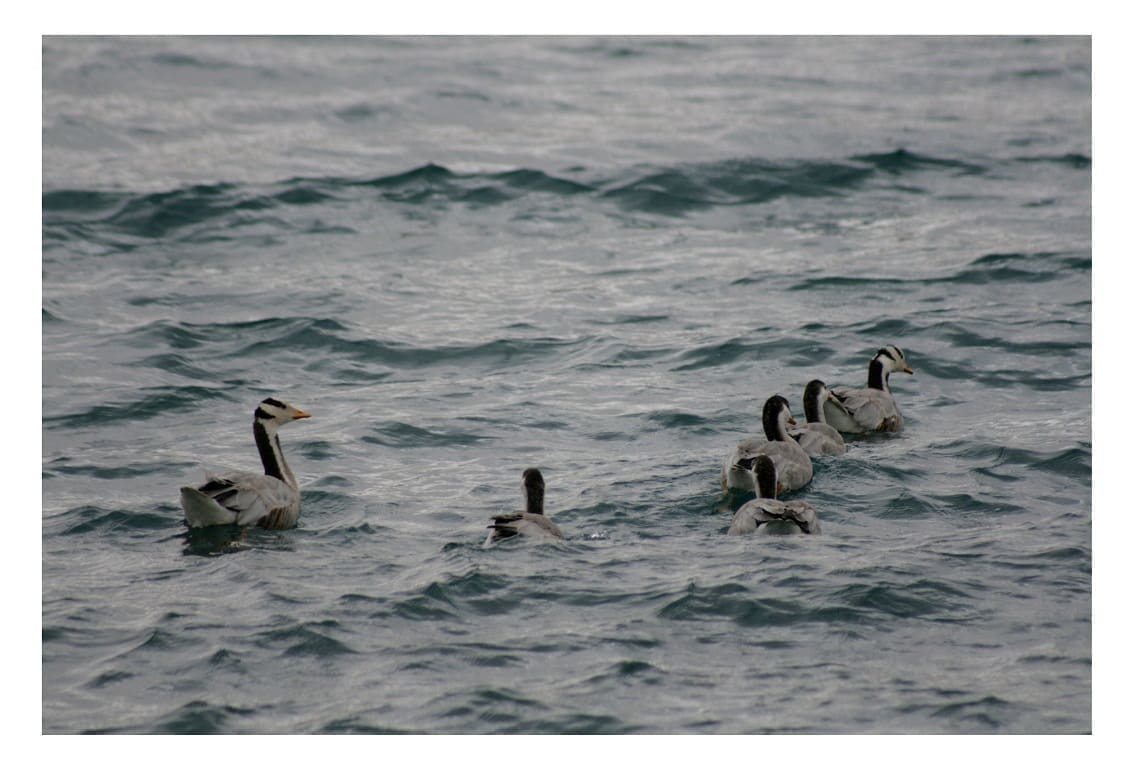The Dodi Tal trek has always been talked about in trekking circles as one of the best treks to get someone started on a lifetime of Himalayan journeys. For a 3–4 day trek, it packs more beauty per mile covered than any other easily accessible trek, and its end point, Dodi Tal—the lake where Lord Ganesha is believed to have been born—is one of the loveliest in the Western Himalaya.
The trek, like many others, has been shortened by the expanding road network in the region. Agoda, the present starting point, is a few hours’ drive from the Uttarkashi–Gangotri highway, and Dodi Tal is a two-day walk up from there. The regular itinerary suggests a return via Agoda after spending a day at the lake, but there are accounts of this being a part of the old Char Dham pilgrim route to Yamunotri. Dodi Tal sits just below the ridgeline that separates the Bhagirathi and Yamunotri watersheds. By local accounts, pilgrims used to climb up to this ridge — the highest point being the Darwa Top — and cross the pass to descend into the Yamuna valley. Depending on where one descends, Yamunotri is a 20–30 km walk upriver.
By the autumn of 2024, as we were planning the trek, amped-up publicity of the upcoming Kumbh Mela was already underway. As the crow flies, the distance between the origins of Bhagirathi and Yamuna is just about 40 km. However, from the ice crystals of the Gangotri glacier and the snowmelt pool at Saptarshi Kund above Yamunotri, the sisters travel a combined distance of almost 2,000 km before they meet at the last of the prayags near Prayagraj (erstwhile Allahabad).
Since I was going to be visiting the Mela in January 2025 (my fourth visit, going by the six-yearly cycles), a trek up from the Bhagirathi valley to the Yamuna, along the pilgrim trail, would complete a circle for me. As it would turn out later, almost half of my fellow trekkers would complete this pilgrimage. While some may ascribe these lists to the frenzy driven up by a combo of high-profile dips, social media, and the round-the-clock megaphonic sound bites on TV, I choose to believe otherwise. Retracing the pilgrim trail connecting the origins of the Ganga and the Yamuna, I think, had already set us on the path to this journey to their final meeting point.

Day 1: Trek to Manjhi – The Ascent to Dodi Tal
After spending the night at Agoda village, we started out on a fairly steep trail. We learnt later that the original trail had been washed off, resulting in 3 km being added to the distance, most of it accounted for in the tough initial climb.

Soon we reached our first waterfall and stream crossing. No matter how many streams one has crossed before, the feeling of coming across one in the Himalaya is always magical. There is the soft flow of clear water over the smooth rocks, the coloured stones at the bottom shimmering in the chequered reflections of light, the promise of rest, cool water for parched throats, and a view of the river vanishing into the valley below — the waters leaving the trekker with the softest of roars. This was going to be our first refill point, with the trail easing off considerably after this break.
No matter how many streams one has crossed before, the feeling of coming across one in the Himalaya is always magical.

The forest was lush with a hint of autumn colours. Plenty of waterfalls coiled through it. The forest was quiet, the only highlight being a group of Himalayan Griffons (Gyps himalayensis) warming up in a valley slowly filling up with light as the mist evaporated. They made slow circles, criss-crossing each other’s arcs in leisurely glides and swoops, testing their wings in anticipation of the thermals building up as the sun rose and the shafts of light bouncing on thick forest canopy melted off the early morning blue from the Asi Ganga gorge.

We reached Manjhi just before the last daylight faded, after 6–7 hours and covering approximately 13 km instead of the planned 10. Manjhi, a seasonal shepherds’ settlement, was deserted; the residents had moved their cattle downhill to the permanently inhabited villages.
All the team members walked well, given it was the first time in the Himalaya for a few of them. It was a fairly tough day, as the first day always is — with the body breaking in and the team walking a steady 7-hour walk against the slope with considerable elevation gained at the end of the day.

Day 2: Into the Heart of the Forest – Arrival at Dodi Tal
This was going to be an easy trek and turned out to be just that. After a short 5-km saunter through the forest, we reached the fabled lake. The gradient was stable and gentle — and it took us about 3–4 hours to complete at a normal pace, with plenty of time to enjoy the walk and the lush forest slowly transforming from lowland vegetation to mainly oak, deodar, and rhododendron. The last part of the trek took us through rocky terrain, with jagged boulders strewn about amidst leafless trees, and the ground covered in thick autumn leaves — a garden any Zen monk would be proud of.

Dodi Tal is unbelievably lovely. The lake is roughly circular, with clear, fresh water and schools of mahseer. It is surrounded by forest on three sides, with a small outlet of Asi Ganga heading through its deep gorge towards Agoda and on its way to join the Bhagirathi at Uttarkashi — its gentle trickle giving no indication of its fierce and destructive streak during the monsoon.
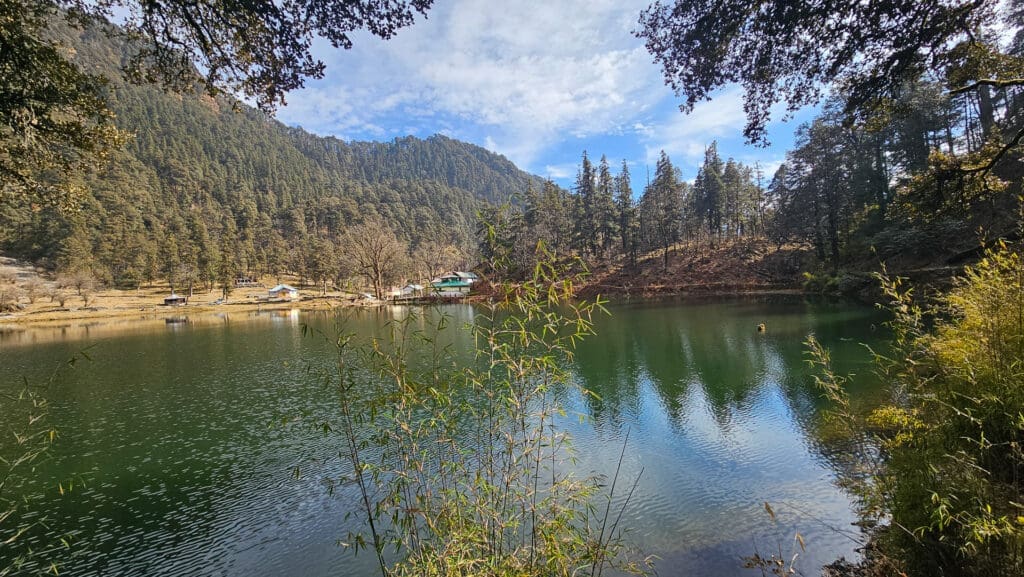
We had reached the lake in time to enjoy a hot meal of rajma and rice and laze around in the sun on a clear bright day. The far end of the lake was full of debris and moraine, hinting at the huge seasonal flow of the feeder streams from the Darwa Pass.
Day 3: Climbing to Darwa Pass – Leaving Dodi Tal Behind
This was supposed to be a rest day, but we decided to trek the 5 km to the Darwa Pass to snip off the distance to be covered on Day 4. The Darwa Top—and Pass—mark the split of the Yamuna and Bhagirathi watersheds. The streams that feed Dodi Tal are the final feeders to the Bhagirathi, and the gorge was fairly steep, covered with moraine and rubble.


As we climbed through the gap between the two granite walls of the gorge, the force of these last waters became evident. Though the ice-gripped stream was now gentle, in season it had tossed the jagged boulders about, with an occasional uprooted tree thrown in, accumulating broken rock debris along the shores of the lake. The debris zone spanned the entire breadth of the lake, the flow slowed down by a sudden easing off in the gradient—else it would have filled the lake itself with rocks and moraine. A blade of grass, one tiny pebble, a gentle depression in the soil on the Darwa Pass would eventually decide if a drop made its way to the Yamuna or the Bhagirathi. But once the die was cast, the claim to the water seemed absolute. While the sisters would eventually unite, 600 km downstream, over here in the valleys, ridges, bugyals, and gorges, every drop was being accounted for in this celestial split.
A blade of grass, one tiny pebble, a gentle depression in the soil on the Darwa Pass would eventually decide if a drop made its way to the Yamuna or the Bhagirathi.
The five kilometres were easily among the toughest trekking walks in the Himalaya, barring the crossing of a glaciated pass. The gradient was tough and unrelenting — a constant tug on the calf muscles. It was a walk where one tries not to look ahead but down, and count the switchbacks to mark distance. As we climbed, the valley behind cradling the blue lake was more beautiful with every step, and the bugyals of Darwa Top tantalisingly closer.

The team did exceptionally well — we walked with no complaints, a humble acceptance of the path ahead and gentle resilience of a pilgrim. Finally, once within 100 metres of the top, we had a leisurely lunch and relaxed with views of the valley we had climbed through.

Darwa Pass and Darwa Top’s presiding deity is Bandarpunch, the feeder snows of the Yamuna. The exposed and extremely cold campsite had spectacular views of the mountain, and the Himalaya rewarded us with a brief snowfall (and would continue to bless us with excellent weather). This was the halfway point of the trek — we were cold and tired, the night sky was frigid with the bright, frozen light of the stars and constant gusts. Later in the night, hot water bottles would freeze to ice. But we were done with the tough ascent and our bodies acclimatised to the rigours of the altitude.
Day 4: Darwa Top to Forest Camp – The Descent
This was the day we truly grasped the semantic difference between “2 km ascent” and “2 kilometres of ascent”! A final surprise climb awaited us before the descent began. The morning was extremely cold and we were happy to move on from the exposed campsite to the protection of the bugyals and their gentle, undulating slopes.

We reached Darwa Top (or rather the ridge that ascends to the top) after crossing a few frozen streams and began our first decent descent after three days. The trail was now quite broken and washed off in places. One of our teammates took a tumble but mercifully came to rest after a couple of somersaults with virtually no damage to body or soul.

After a 2 km walk, we were ominously in sight of another top which I reckoned was as high (if not higher) than the Darwa Top. It turned out to be a tad lower, but that was just statistics. Energised by the prospect of a long descent, our energy depleted at the sight of this top—and the dwindling water ration did not help. We trudged our way up to finally begin our descent for the day, a long undulating walk over the bugyals and frozen streams. Finally, after 3–4 hours, much to our relief, we sighted our camps next to an ice-kissed stream at the edge of the forest. Luckily, we reached the camp with some daylight left—but not before an excruciating walk over broken rock and moraine that slowed us down to a crawl.


The campsite was a welcome one, being warmer than the previous, with a lovely setting at the edge of the luxuriant forest and a clear stream next to it. The cold light of the stars shining through the night, with the arch of the Milky Way spanning the skies to the left of Bandarpunch, was lovely—especially when seen through the oaks that promised a warmer and welcoming descent the next day.
The cold light of the stars shining through the night with the arch of the Milky Way spanning the skies… were lovely for once, especially when seen through the oaks that promised a warmer and welcoming descent the next day.
Day 5: Through Ancient Forests – Completing the Dodi Tal Trek
This was going to be our last day of walking, and after almost 45 km of trekking (including Day 5), we were all looking forward to getting back to civilisation. We trekked through a gentle downward slope (fairly well maintained, with only a few broken patches) — the forest was dark and old, with moss-covered trees, a delightful mix of rhododendrons, oaks, maple, and pine. The absence of activity pointed to most of the denizens having left for lower forests at the onset of winter. It was full of gushing streams, not yet in the grip of ice, and was delightfully verdant and moist. It was one of the loveliest forest walks in all my years of trekking — reminding me of the forests below Bedni Bugyal and Har-ki-Doon. In summer, this would be a birder’s delight.


En route, I got my gift from the Himalaya — the feather of a male Himalayan Monal which had met a violent end (the night before?), shimmering in its hues of golds, blues, greens, and all shades in between. I had once begged for one feather from our guide at the Valley of Flowers in 2007 to bring home for Pia’s feather book — and here, 17 years later, we had a whole bouquet. A gift, as always. And a reminder of the cycle of life and death, erosion and renewal, the play of time across eons where the mightiest mountains rise from tectonic clashes of continents and are then ground to dust — but every single moment in this eternal play is an unfolding of beauty and delight which transcends time itself.
After stopping for lunch at an opening in the forest, we continued our way down through two villages and finally to our vehicle. The trek was over. We were all tired and refreshed at the same time — looking forward to another year, another trek, with the blessings of Yamuna and Bhagirathi.
Thanks to my fellow trekkers for sharing images of the trek
- Trekking with Griffons: Dodi Tal via Darwa Pass - April 17, 2025
- Encounter: The Sacred Grove at Oorani - November 28, 2012
- Encounter: Rhododendron, sentinel of the highlands - October 7, 2012


